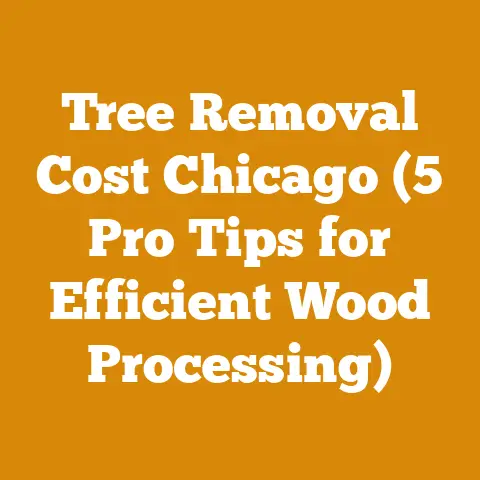Tree Cutting License Basics (5 Insider Tips for Woodworkers)
The Whisper of the Falling Timber: A Woodworker’s Dance with the Law
The forest breathes secrets, doesn’t it?
Every rustle of leaves, every creak of a branch, is a story whispered on the wind.
But there’s a secret some woodworkers learn the hard way – a secret etched in legal jargon and bureaucratic red tape: the tree cutting license.
I’ve been there, standing at the edge of a promising woodlot, the scent of pine heavy in the air, my trusty chainsaw humming a song of potential.
Then, the cold realization hits: am I even allowed to be here?
Is this dream of crafting beautiful furniture about to be shattered by a legal nightmare?
Trust me, the consequences of ignoring tree cutting regulations can be severe, ranging from hefty fines to the confiscation of your hard-earned timber – or even worse.
That’s why understanding the ins and outs of tree cutting licenses is crucial for any woodworker, whether you’re a hobbyist or a seasoned professional.
In this article, I’m not just going to regurgitate dry legal text.
I’m going to share my experiences, my mistakes, and the hard-won knowledge I’ve gained over years of navigating the world of tree cutting permits.
Consider this your insider’s guide, packed with practical tips and insights to help you stay on the right side of the law while pursuing your passion for woodworking.
Key Takeaways:
- Understanding is Key: Grasp the fundamental reasons behind tree cutting licenses and permits, and their importance for sustainable forestry.
- Navigating the Bureaucracy: Learn how to identify the specific regulations in your area and the steps involved in obtaining the necessary permits.
- Avoiding Costly Mistakes: Discover common pitfalls to avoid when applying for and complying with tree cutting regulations.
- Sustainable Practices: Integrate responsible forestry practices into your wood harvesting activities to ensure long-term resource availability.
- Leveraging Technology: Explore how digital tools and resources can streamline the permitting process and enhance compliance.
Why You Need a Tree Cutting License: Beyond the Red Tape
Let’s be honest, dealing with permits and licenses isn’t exactly the most exciting part of woodworking.
But before you dismiss it as unnecessary bureaucracy, consider the bigger picture.
Tree cutting licenses exist for a reason, and understanding that reason is the first step toward responsible and sustainable woodworking.
The Forest’s Silent Guardians: The Role of Regulations
Think of forests as complex ecosystems, intricate webs of life that support everything from the smallest insects to the largest mammals.
Unregulated tree cutting can disrupt these delicate balances, leading to deforestation, soil erosion, habitat loss, and even climate change.
Tree cutting licenses act as a safeguard, ensuring that timber harvesting is conducted in a sustainable manner.
They help regulate the amount of timber that’s harvested, the methods used, and the areas where cutting is allowed.
This, in turn, helps protect the environment and ensure that future generations can enjoy the benefits of healthy forests.
Data Point: According to the Food and Agriculture Organization of the United Nations (FAO), deforestation contributes to 15% of global greenhouse gas emissions.
Sustainable forestry practices, enforced through regulations, can significantly reduce this impact.
My Wake-Up Call: A Personal Lesson in Compliance
I remember one particular project where I got a little too eager.
I had my eye on a beautiful stand of black walnut trees on what I thought was public land.
I envisioned crafting stunning tabletops and intricate carvings from that rich, dark wood.
I started felling trees without checking the local regulations and without a permit.
I was so focused on the project that I overlooked a critical detail: the land was actually privately owned and protected under local conservation laws.
The consequences were swift and severe.
I faced a hefty fine, had my chainsaw confiscated temporarily, and was forced to replant trees to compensate for the damage.
It was a humbling experience, to say the least.
That incident taught me a valuable lesson: ignorance of the law is no excuse.
It also reinforced the importance of respecting the environment and the rights of landowners.
From that day forward, I vowed to always do my due diligence and obtain the necessary permits before cutting any tree.
Beyond Compliance: Embracing Sustainable Practices
Obtaining a tree cutting license isn’t just about avoiding legal trouble; it’s about embracing a mindset of sustainability.
It’s about recognizing that we have a responsibility to protect our forests for future generations.
Here are a few key principles of sustainable forestry:
- Selective Harvesting: Choose mature or diseased trees for removal, leaving younger, healthier trees to continue growing.
- Reforestation: Replenish harvested areas with new seedlings to ensure the long-term health of the forest.
- Erosion Control: Implement measures to prevent soil erosion, such as leaving buffer zones along waterways.
- Wildlife Protection: Consider the impact of your activities on wildlife habitats and take steps to minimize disturbance.
Expert Insight: “Sustainable forestry is not just about cutting trees responsibly; it’s about managing the entire ecosystem to ensure its long-term health and productivity,” says Dr. Emily Carter, a forestry expert at the University of Washington.
“It requires a holistic approach that considers the needs of the environment, the economy, and the community.”
Okay, so you understand why you need a tree cutting license.
Now, let’s get down to the nitty-gritty of how to get one.
This process can vary significantly depending on your location, the type of land you’re cutting on, and the species of trees involved.
But don’t worry, I’ll break it down into manageable steps.
Step 1: Know Your Location, Know Your Laws
The first step is to identify the specific regulations that apply to your situation.
This requires some research, but it’s well worth the effort.
- Identify the Governing Body: Determine which government agency is responsible for regulating tree cutting in your area.
This could be a state forestry department, a local municipality, or even a federal agency, depending on the land ownership. - Consult Official Websites: Visit the official website of the relevant agency.
Look for information on tree cutting permits, regulations, and application procedures. - Contact the Agency Directly: Don’t hesitate to call or email the agency with specific questions.
They can provide valuable guidance and clarification.
Example: In the state of Oregon, the Oregon Department of Forestry (ODF) is responsible for regulating timber harvesting on private lands.
The ODF website provides detailed information on permit requirements, harvesting practices, and environmental regulations.
Step 2: Determine the Type of Permit You Need
Once you understand the general regulations, you need to determine the specific type of permit required for your project.
This will depend on several factors, including:
- Land Ownership: Is the land public, private, or tribal?
Different regulations may apply to each. - Volume of Timber: How much timber do you plan to harvest?
Some jurisdictions have thresholds that trigger different permit requirements. - Tree Species: Are you cutting protected or endangered tree species?
Special permits may be required. - Harvesting Method: Are you using manual methods (chainsaw) or mechanical equipment (harvester)?
Different methods may have different requirements.
Case Study: A small woodworking shop in Vermont wanted to harvest maple trees from their own property to make furniture.
They discovered that they needed a “Small Harvest Notification” permit from the Vermont Department of Forests, Parks and Recreation because they were harvesting more than 10 cords of wood.
Step 3: The Application Process: Paperwork and Patience
Now comes the part that most woodworkers dread: filling out the application.
Be prepared to provide detailed information about your project, including:
- Landowner Information: Name, address, and contact information of the landowner (if you’re not the owner).
- Property Description: Legal description of the property, including parcel number and coordinates.
- Harvest Plan: Detailed description of the trees to be harvested, the harvesting method, and the planned reforestation efforts.
- Environmental Assessments: Some jurisdictions may require environmental assessments to evaluate the potential impact of your project.
Tip: Be thorough and accurate when completing the application.
Incomplete or inaccurate information can delay the process or even lead to rejection.
Data Point: According to a survey by the National Association of State Foresters (NASF), the average processing time for tree cutting permits is 4-6 weeks.
Plan accordingly and submit your application well in advance of your planned harvesting date.
Step 4: Inspection and Approval: The Waiting Game
Once you’ve submitted your application, the agency will typically conduct an inspection of the property to verify the information provided and assess the potential environmental impact.
This may involve a site visit by a forester or other qualified professional.
Be patient during this process.
The agency needs time to review your application, conduct the inspection, and make a decision.
Don’t hesitate to follow up with the agency to check on the status of your application, but be polite and professional.
Step 5: Compliance and Reporting: Staying on Track
Once your permit is approved, it’s crucial to comply with all the terms and conditions outlined in the permit.
This may include:
- Harvesting Restrictions: Adhering to specific harvesting methods, tree species, or volume limits.
- Erosion Control Measures: Implementing measures to prevent soil erosion, such as installing silt fences or leaving buffer zones.
- Reforestation Requirements: Planting new seedlings within a specified timeframe.
- Reporting Requirements: Submitting regular reports to the agency on your harvesting activities.
Warning: Failure to comply with the terms of your permit can result in fines, penalties, or even revocation of your permit.
Avoiding the Axe: Common Mistakes and How to Dodge Them
Even with the best intentions, it’s easy to make mistakes when navigating the complex world of tree cutting licenses.
Here are some common pitfalls to avoid:
Mistake #1: Assuming You Don’t Need a Permit
This is perhaps the most common and costly mistake.
Many woodworkers assume that they don’t need a permit if they’re only cutting a few trees or if they’re cutting on their own property.
However, this is often not the case.
Solution: Always check with the relevant government agency to determine whether a permit is required, regardless of the size or location of your project.
Mistake #2: Misinterpreting Regulations
Tree cutting regulations can be complex and confusing, especially for those who are not familiar with legal jargon.
It’s easy to misinterpret the rules and make assumptions that can lead to violations.
Solution: Don’t rely on your own interpretation of the regulations.
Seek clarification from the government agency or consult with a qualified forestry professional.
Mistake #3: Incomplete or Inaccurate Applications
As I mentioned earlier, incomplete or inaccurate applications can delay the permitting process or even lead to rejection.
This can be frustrating and costly, especially if you’ve already started planning your project.
Solution: Take your time and be thorough when completing the application.
Double-check all the information to ensure accuracy.
Mistake #4: Ignoring Environmental Considerations
Tree cutting regulations are often designed to protect the environment.
Ignoring these considerations can lead to violations and environmental damage.
Solution: Be mindful of the potential environmental impact of your project and take steps to minimize disturbance.
This may involve implementing erosion control measures, protecting wildlife habitats, or avoiding cutting near waterways.
Mistake #5: Failing to Report Harvesting Activities
Many tree cutting permits require you to submit regular reports on your harvesting activities.
Failing to do so can result in fines or penalties.
Solution: Keep accurate records of your harvesting activities and submit reports on time.
Mistake #6: Cutting Across Property Lines
This might sound obvious, but I’ve seen it happen.
Make sure you know exactly where your property lines are before you start cutting.
Solution: Use GPS or hire a surveyor to accurately mark your property boundaries.
Mistake #7: Not Understanding Timber Ownership
Just because a tree is on your property doesn’t necessarily mean you own it.
Mineral rights, timber rights, and other agreements can complicate ownership.
Solution: Research any existing agreements or rights that might affect timber ownership on your property.
Mistake #8: Cutting Protected Species
Some tree species are protected due to their rarity or ecological importance.
Cutting these species can result in severe penalties.
Solution: Familiarize yourself with the protected species in your area and avoid cutting them.
Cutting Edge: Leveraging Technology for Efficient Permitting
The world is going digital, and the forestry industry is no exception.
A growing number of government agencies are offering online tools and resources to streamline the permitting process and enhance compliance.
Online Permitting Portals
Many agencies now offer online portals where you can submit permit applications, track their progress, and communicate with agency staff.
These portals can save you time and effort by eliminating the need for paper forms and in-person visits.
Example: The California Department of Forestry and Fire Protection (CAL FIRE) offers an online permitting portal called “eTimber” that allows landowners to submit timber harvesting plans electronically.
Geographic Information Systems (GIS)
GIS technology allows you to view and analyze spatial data, such as property boundaries, forest types, and environmental features.
This can be invaluable for planning your harvesting activities and ensuring compliance with regulations.
Tip: Many government agencies offer free online GIS viewers that you can use to access spatial data for your area.
Mobile Apps
A growing number of mobile apps are available to help woodworkers and foresters manage their operations.
These apps can be used for tasks such as:
- Mapping and Navigation: Locating property boundaries, marking trees for harvesting, and navigating through the forest.
- Data Collection: Recording tree measurements, tracking harvesting activities, and documenting environmental conditions.
- Compliance Monitoring: Tracking permit requirements, monitoring erosion control measures, and reporting harvesting activities.
Example: The “TreePlotter” app allows users to map and inventory trees, collect data on tree health and condition, and generate reports for compliance purposes.
Drones for Forest Monitoring
Drones equipped with cameras and sensors can be used to monitor forest health, assess timber volumes, and detect illegal logging activities.
This technology is becoming increasingly affordable and accessible, making it a valuable tool for both government agencies and private landowners.
Research Finding: A study by the University of Maine found that drones can accurately estimate timber volumes with a margin of error of less than 10%.
Beyond the License: Cultivating a Sustainable Mindset
Obtaining a tree cutting license is just the first step toward responsible and sustainable woodworking.
To truly make a difference, you need to cultivate a mindset of sustainability in all aspects of your work.
Sourcing Sustainable Wood
Whenever possible, source your wood from sustainable sources, such as:
- Certified Forests: Look for wood that is certified by organizations such as the Forest Stewardship Council (FSC) or the Sustainable Forestry Initiative (SFI).
These certifications ensure that the wood comes from forests that are managed in a sustainable manner. - Local Sawmills: Support local sawmills that source their wood from responsibly managed forests.
- Reclaimed Wood: Use reclaimed wood from old buildings or structures.
This reduces the demand for newly harvested timber and gives new life to beautiful wood.
Minimizing Waste
Woodworking can generate a lot of waste. Take steps to minimize waste by:
- Planning Your Projects Carefully: Plan your projects carefully to minimize the amount of wood that is wasted.
- Using Offcuts and Scraps: Find creative ways to use offcuts and scraps of wood.
These can be used for small projects, such as boxes, toys, or decorative items. - Recycling Sawdust: Use sawdust as mulch in your garden or compost pile.
Conserving Energy
Woodworking can be energy-intensive. Take steps to conserve energy by:
- Using Energy-Efficient Tools: Choose energy-efficient tools and equipment.
- Turning Off Lights and Equipment: Turn off lights and equipment when they are not in use.
- Using Natural Light: Take advantage of natural light whenever possible.
Giving Back to the Forest
Consider giving back to the forest by:
Here are some insider tips that can help you stay on the right side of the law:
- Build Relationships: Get to know the foresters and agency staff in your area.
They can be valuable resources for information and guidance. - Attend Workshops and Seminars: Attend workshops and seminars on sustainable forestry and tree cutting regulations.
This is a great way to learn from experts and network with other woodworkers. - Join a Local Forestry Association: Join a local forestry association.
These associations provide educational resources, networking opportunities, and advocacy for sustainable forestry practices. - Keep Detailed Records: Keep detailed records of your harvesting activities, including the date, location, species, and volume of timber harvested.
This will help you comply with reporting requirements and demonstrate your commitment to sustainable forestry. - Don’t Be Afraid to Ask Questions: If you’re unsure about something, don’t be afraid to ask questions.
It’s better to ask for clarification than to make a mistake that could result in fines or penalties.
The Final Cut: Your Path to Responsible Woodworking
Navigating the world of tree cutting licenses can seem daunting, but it’s a necessary part of being a responsible woodworker.
By understanding the regulations, following the proper procedures, and embracing a mindset of sustainability, you can ensure that you’re not only creating beautiful woodworking projects but also protecting our forests for future generations.
Remember my story, the lesson I learned from that black walnut stand.
Don’t let eagerness blind you to the legal and ethical responsibilities that come with working with wood.
So, go forth, research your local regulations, obtain the necessary permits, and cut responsibly.
Let the whisper of the falling timber be a song of respect, not a lament of regret.
Actionable Steps:
- Research Your Local Regulations: Identify the government agency responsible for regulating tree cutting in your area and consult their website for information on permit requirements.
- Contact the Agency Directly: Don’t hesitate to call or email the agency with specific questions about your project.
- Consider a Forestry Consultation: If you’re unsure about any aspect of the permitting process, consider hiring a qualified forestry professional to provide guidance.
- Plan Your Project Carefully: Plan your project carefully to minimize waste and environmental impact.
- Embrace Sustainability: Source sustainable wood, minimize waste, conserve energy, and give back to the forest.
Now, grab your tools, respect the law, and create something beautiful.
The forest awaits, and with the right knowledge and approach, you can be a part of its sustainable future.






